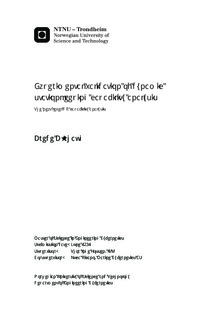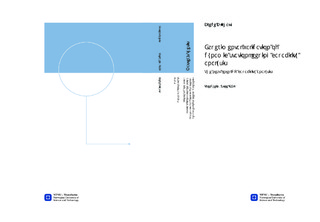| dc.description.abstract | This thesis considers two main issues: the theoretical aspects of stationkeeping capability analysis in general, and dynamic capability (DynCap) analysis in particular; further there has been conducted capability analyses of the model vessel, CyberShip III, including an experimental validation of the results.This thesis presents the most comprehensive investigation into the differences between the DynCap analysis and the industry standard DP capability analysis (DPCap), published to date, as far as both Marine Cybernetics AS and the author are aware of. The mathematical foundation of DynCap has been investigated in detail, and it has been shown that by applying the simplications and assumptions proposed in the industry used IMCA M140 specications for DP capability plots to the equations of DynCap, it is possible to arrive at the DPCap equations. The review of the mathematical foundation of capability analysis, highlights the benefits of employing the DynCap analysis in favor of the DPCap analysis, and provides the necessary mathematical motivation for choosing the DynCap analysis in favor of the DPCap analysis.This thesis also presents multiple stationkeeping capability analyses of CyberShip III. The stationkeeping capability of CyberShip III was obtained through both DPCap analysis and DynCap analysis. In addition, an experiment using the model vessel CyberShip III was conducted, in order to obtain the true stationkeeping capability of CyberShip III. The results obtained revealed that the traditional DPCap analysis, seems repeatedly to be too optimistic, and that the DynCap results seems to be more realistic. The experimental results show that the relative reduction in depicted capability between the result obtained through DynCap analysis and experimental data obtained, is approximately 10%. In contrast, the relative reduction from DPCap results, compared to the experimental data, where found to be approximately 60%.By combining the theoretical foundation of DynCap, the simulations conducted and the experimental data obtained, the thesis is able to validate the DynCap stationkeeping capability analysis. The superior performance of the DynCap analysis, relative the DPCap analysis, provides additional arguments for employing the DynCap method in favor of the industry standard DPCap. Further the thesis highlights possible shortcomings of the DynCap analysis, including remarks in regard to the complexity and accuracy of the models used during the DynCap simulations. The implications of the results presented in this thesis may be regarded as considerable. The results show that without a well defined standard for DPCap analysis, the validity of the results are uncertain. The uncertainty in turn limits the use of the obtained results. This thesis proposes that by employing the DynCap analysis, the operators, ship owners and oil companies, will be able to make decisions based on more accurate data, which will enhance security, and reduce non-productive time. With well defined limits of operation for the vessels, it will be possible to utilize theresources in a more productive manner. By basing decisions on accurate data, the selected vessel may be able to operate closer to the limit, without compromising security. This will in turn reduce costs and possibly increase profits.Keywords: Dynamic Positioning, DP, DP Capability, DPCap, Dynamic Stationkeeping Capability, DynCap | nb_NO |

